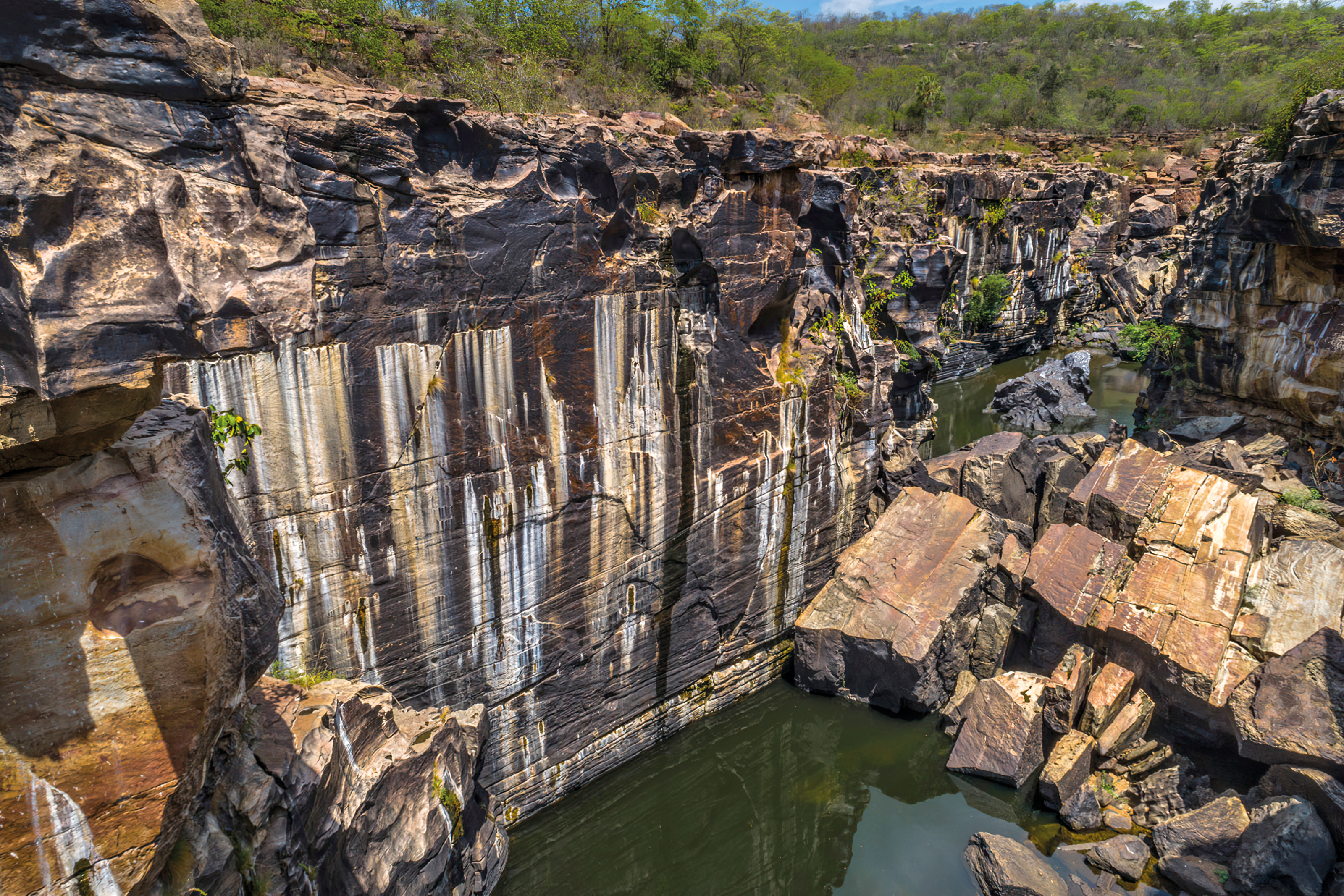
Parque Estadual do CÂNION CEARENSE do RIO POTI

Situado na divisa dos estados do Ceará e Piauí, o Cânion do Rio Poti é formado por extensos paredões escavados nas rochas pela fúria das águas e dos ventos. Falha geológica ocorrida há milhões de anos, o cânion guarda a beleza selvagem que só o tempo pode conferir, com grandes pedras, cachoeiras, abrigos naturais, inscrições rupestres e paisagens de puro encantamento. Por estar no bioma Caatinga, possui fauna e flora peculiares e ocasionalmente endêmicas, sendo imprescindível a sua preservação. Com 3.680,55 ha de extensão, o Parque Estadual foi criado em 2021, pelo Decreto Estadual nº 34.132. Fica entre os municípios de Crateús e Poranga e foi constituído com o objetivo de proteger a porção cearense do Cânion do Rio Poti – que nasce no Ceará e deságua no Piauí – amparando as pesquisas científicas, atividades de educação e interpretação ambiental, recreação em contato com a natureza e turismo ecológico. Possui sítios de gravuras rupestres de grande relevância antropológica nas proximidades do distrito de Oiticica, Crateús.
Acesse: Galeria de Fotos
Ceara Canyon State Park of Rio Poti
Located on the border of the states of Ceará and Piauí, the Rio Poti Canyon is formed by extensive cliffs carved into the rocks by the fury of water and wind. A geological fault that occurred millions of years ago, the canyon preserves the wild beauty that only time can confer, with large rocks, waterfalls, natural shelters, rock engravings, and landscapes of pure enchantment. Being in the Caatinga biome, it has unique and occasionally endemic fauna and flora, making its preservation essential. With an extension of 3,680.55 hectares, the State Park was created in 2021 by State Decree No. 34,132. It is located between the municipalities of Crateús and Poranga and was established with the aim of protecting the Ceará portion of the Rio Poti Canyon – which originates in Ceará and flows into Piauí – supporting scientific research, environmental education and interpretation activities, recreation in contact with nature, and ecological tourism. It has rock engraving sites of great anthropological relevance near the district of Oiticica, Crateús.
Access: Photo Gallery
